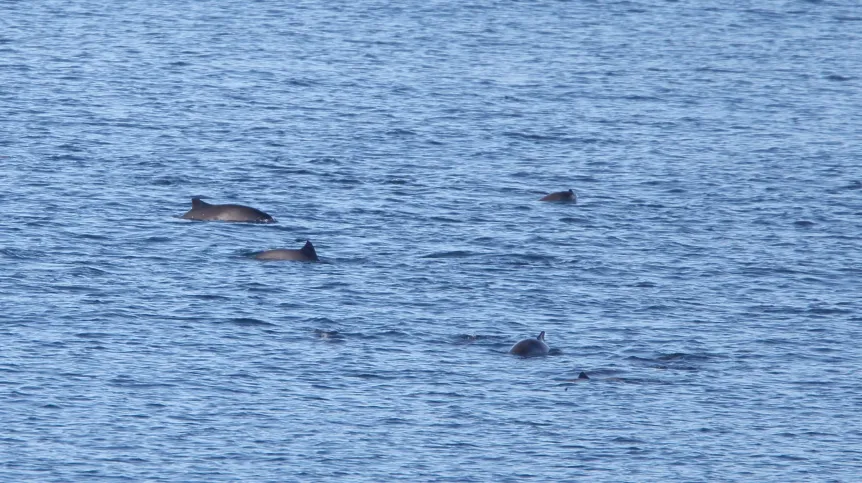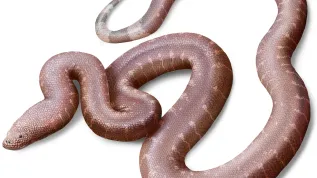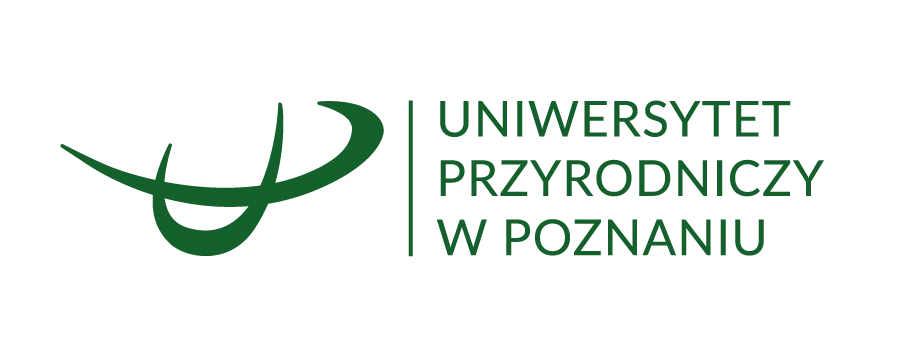
Porpoises are incredibly difficult to observe - they are small and very shy animals. In the Baltic Sea, and especially in Polish waters, the porpoise is a guest and therefore strictly protected. However, this species is not endangered globally, says oceanologist Professor Jan Marcin Węsławski.
The porpoise is one of the smallest representatives of the cetacean order, often confused with a dolphin. Adults reach a length of 1.5 to 1.8 meters and weigh about 60 kg. They are characterized by a short, truncated nose and a low, triangular dorsal fin, which distinguishes them from dolphins, which have longer, sickle-shaped fins. They lead a very secretive lifestyle, swimming alone or in small groups of 2-3 individuals.
Their small size, shyness and ability to stay underwater for long periods of time make these mammals very difficult to observe and count. Therefore, the main information about the presence of porpoises in Polish waters comes from cases of finding dead individuals on the shores.
'Every year, one to ten such cases are recorded on the Polish coast, caused by diseases, collisions with vessels or entanglement in fishing nets. On this basis, attempts are made to estimate how many of them actually live here. However, these are not very precise data', explains Professor Jan Marcin Węsławski, director of the Institute of Oceanology of the Polish Academy of Sciences in Sopot.
He adds the porpoise is currently a guest in the Baltic Sea, and even more so in Polish waters, and for this reason it is strictly protected here. However, on a global scale, this species is not threatened with extinction. 'It has the status of +least concern+. It is very numerous in the North Atlantic, where its population is several hundred thousand. There are also many porpoises in the North Sea, about 40 thousand individuals live in the Danish Straits between Denmark, Sweden and Norway. The individuals that are seen in the Baltic Sea have largely migrated from there', the scientist says.
He emphasises that talking about a separate, local population of porpoises is therefore unfounded. 'Simply put, when the population of porpoises in the North Sea becomes very numerous, the young individuals are +pushed out+ of it by the older ones and set off into the world to explore new territories. This is how they end up in the Baltic Sea. Most of them appear on the coasts of Denmark, Germany and Southern Sweden, sometimes they migrate to Poland. And the further east you go, towards Finland, the fewer there are', he explains.
'We know this because on our coast we record several dead individuals per year, while on the Finnish coast it is a maximum of one. For comparison - in the North Sea, around Great Britain, about 6,000 dead porpoises are found every year, which perfectly illustrates the difference in their numbers', he adds.
Professor Jan Marcin Węsławski emphasises that, of course, people must not scare, startle or hunt porpoises, but in the case of Polish waters there are also no scientifically justified reasons to introduce additional, complicated protective measures for this species. 'Globally, it is not endangered, and individuals appearing in the vicinity of Poland can hardly be considered native', he points out.
In his opinion, the EU regulations in force since 2022, imposing restrictions, e.g. on fishermen working in the North Sea and the North Atlantic, where thousands of porpoises die due to entanglement in nets, are not fully applicable to Polish conditions. This is particularly true for the requirement to use special deterrent devices (so-called pingers) or restrictions on the methods of setting nets.
'The problem is that the vast majority of Polish fishermen will never see a porpoise in their entire lives. And yet they have suddenly been burdened with regulations that, in their opinion, have no real justification, which leads to conflicts', Węsławski explains.
In his opinion, this situation can be compared to the griffon vulture that appears in Poland every few years. 'Sometimes it happens that individual individuals from the Alps, where their population is large and stable, fly to our Tatra Mountains. And since they are only guests here, there is no point in introducing special protective measures, building nests for them, or banning tourist traffic. It is similar with porpoises', the oceanologist says.
He emphasises that nature conservation should always be based on reliable data and real threats, not on emotions. 'Every animal deserves protection and respect, but we should wisely distinguish when active measures are really needed and when it is enough to take care of maintaining the natural order in nature', he concludes.
Katarzyna Czechowicz (PAP)
kap/ agt/ lm/













